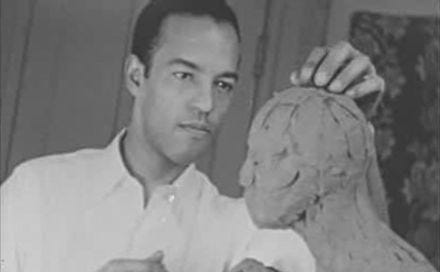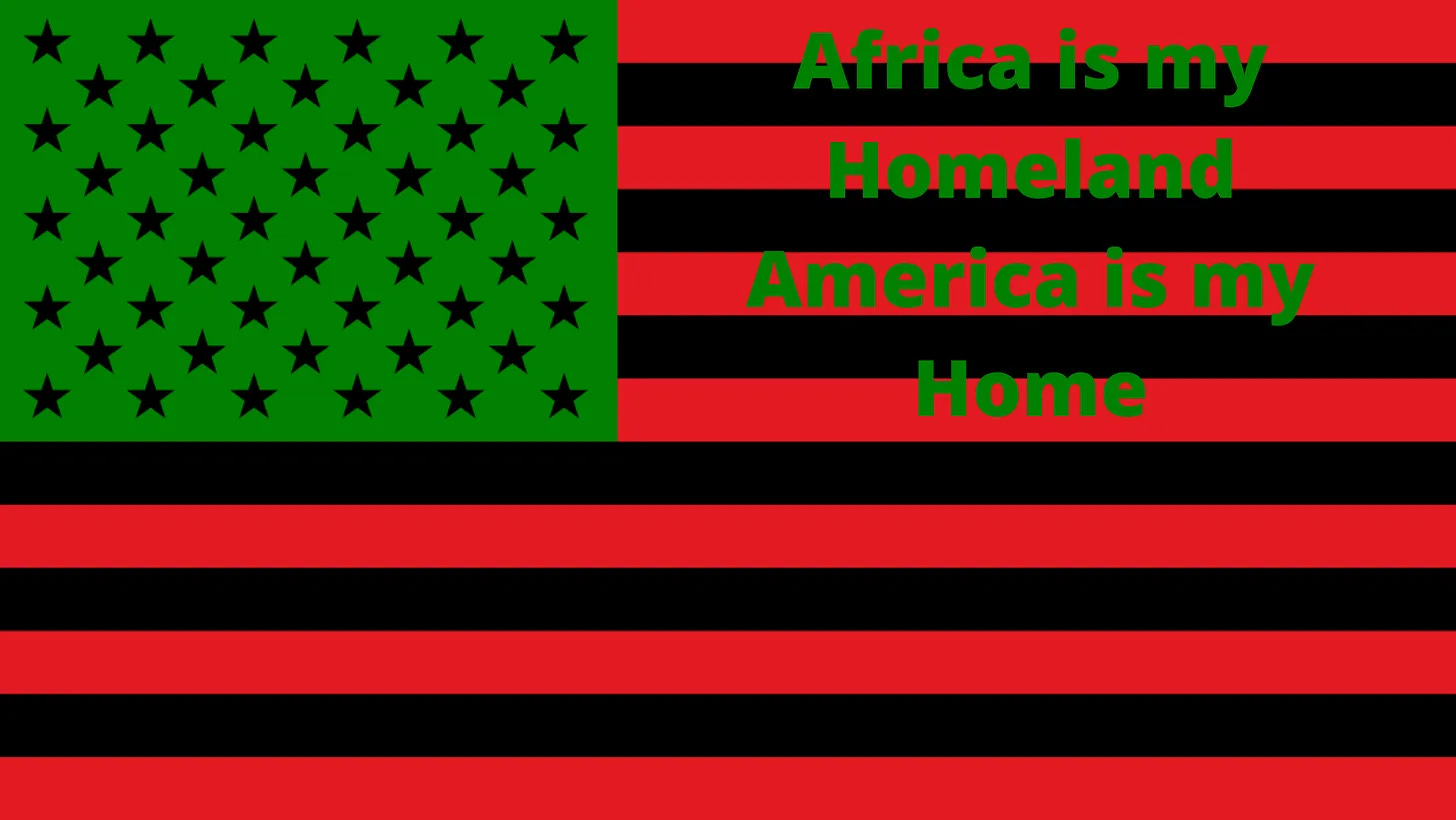Today In Black History: Richmond Barthé
Celebrated sculptor and the first Black gay man to have a street named after him.
Issue #799 Today In Black History, Monday, February 3, 2025
If you like us, REALLY like us, please click the “Like” button at the end of this post!
Your “Likes” mean a LOT to us! We appreciate your support!
Our Frebruary, 2025 subscriber goals are 100 new free subscribers and 60 new paid subscribers! You can help us reach our goal!
Follow Pam on Bluesky.
Follow Keith on Bluesky.
Find valuable Courses and Books for branding and marketing for Independent Authors and Creative Professionals at Pam Speaks 2 You.
We appreciate your support!
Engage with us and our posts in Substack Notes.
James Richmond Barthé was born on January 28, 1901, in Bay St. Louis, Mississippi, to Richmond Barthé and Marie Clementine Robateau. Barthé's father died at the age of 22 when he was only a few months old.
Richmond Barthé grew up in a segregated America, facing the challenges of racial discrimination and limited educational opportunities. Despite these obstacles, his talent was undeniable from a young age. Encouraged by his teachers in New Orleans, Barthé pursued his passion for art, eventually enrolling at the Art Institute of Chicago in 1924. He honed his skills there, studying classical and contemporary techniques that would inform his unique style.
Lyle Saxon, a local writer for the Times-Picayune. Saxon was fighting against the racist system of school segregation and tried unsuccessfully to get Barthé registered in an art school in New Orleans.
In 1924, Barthé donated his first oil painting to a local Catholic church to be auctioned at a fundraiser. Impressed by his talent, Fr Harry F. Kane, SSJ, encouraged Barthé to pursue his artistic career and raised money to undertake fine art studies. At the age of 23, with less than a high-school education and no formal training in art, Barthé applied to the Pennsylvania Academy of Fine Arts and the Art Institute of Chicago and was accepted by the latter.
At the Art Institute of Chicago, Barthé's formal artistic instruction in sculpture took place in anatomy class with professor of anatomy and German artist Charles Schroeder. Students practiced modeling in clay to better understand the three-dimensional form. This experience proved to be, according to Barthé, a turning point in his career, shifting his attention away from painting and toward sculpture.
Barthé was exposed to new experiences as he arrived in the city during the peak of the Harlem Renaissance. He established his studio in Harlem in 1930 after winning the Julius Rosenwald Fund fellowship at his first solo exhibition at the Women's City Club in Chicago.
Barthé's sculptures are celebrated for their striking realism and emotional depth. As a Black artist, Barthé's choice to focus on the human figure was both a personal and political statement; he sought to highlight the dignity and grace of Black individuals at a time when such representations were sorely lacking in mainstream art.
One of Barthé's significant contributions to American art was his involvement in the Harlem Renaissance—a cultural movement that celebrated African American cultural expression in the arts during the 1920s and 1930s. It was a period where Black artists, writers, musicians, and thinkers gathered in Harlem, New York, fostering a vibrant community that pushed for artistic recognition and civil rights.
During the next two decades, he built his reputation as a sculptor. He was awarded several awards and experienced success after success. Writers and critics considered him as one of the leading "moderns" of his time.
After living in several countries, Barthé settled in Pasadena, California, in a rental apartment. Here, Barthé worked on his memoirs and, most importantly, editioned many of his works with the financial assistance of actor James Garner until he died in 1989. Garner copyrighted Barthé's artwork, hired a biographer to organize and document his work, and established the Richmond Barthé Trust.
One of the first streets in L.A. County named for a black man – certainly the first for a gay black man – Barthé Drive honors sculptor Richmond Barthé, who lived on the street. Part of Mountain Street was renamed Barthé Drive in 1982.
Richmond Barthé died on March 5, 1989 (aged 88) in Pasadena, California.
Today In Black History
In 1855, the Wisconsin Supreme Court declared the U.S. Fugitive Slave Law unconstitutional.
In 1874, Blanche Kelso Bruce was elected to a full six-year term in the U.S. Senate by the Mississippi legislature.
In 1870, the 15th Amendment, which gave Black men the right to vote, was ratified.
In 1877, George Washington Henderson graduated from the University of Vermont and became the first African American inducted into the Phi Bta Kappa honor society.
In 1920, the Negro Baseball League was founded.
In 1956, Autherine J. Lucy became the first Black student to attend the University of Alabama. She was suspended three days later for her own safety after a riot by white protestors.
In 1980, Muhammad Ali toured Africa as an envoy of President Jimmy Carter.
In 1989, former St. Louis Cardinals first baseman Bill White was named president of the National League and the first African American to head a major sports league.
In 2009, Eric Holder became the 1st African American U.S. Attorney General.
All “We Are Speaking” posts are now free for everyone to read, and commenting on our posts is now open to everyone!
Our subscriber goals for January 2025 include 20 new free subscribers, including 15 new paid subscribers. Click the link to help us reach our goals!
Our paid subscribers are encouraged to discuss this post in our W.A.S. Chat Community.
Join Pamela Hilliard Owens’s subscriber chat
Available in the Substack app and on the web
You are also welcome to view “We Are Speaking” in Substack Notes. You can also read other Substack publications without subscribing to them when you join Notes.
Did you know that you can listen to each “We Are Speaking” post and engage directly with us on the Substack App? Download the app!
Please check out Keith’s SciFi Musings Substack for posts about fantasy, sci-fi, and Afrofuturism!






